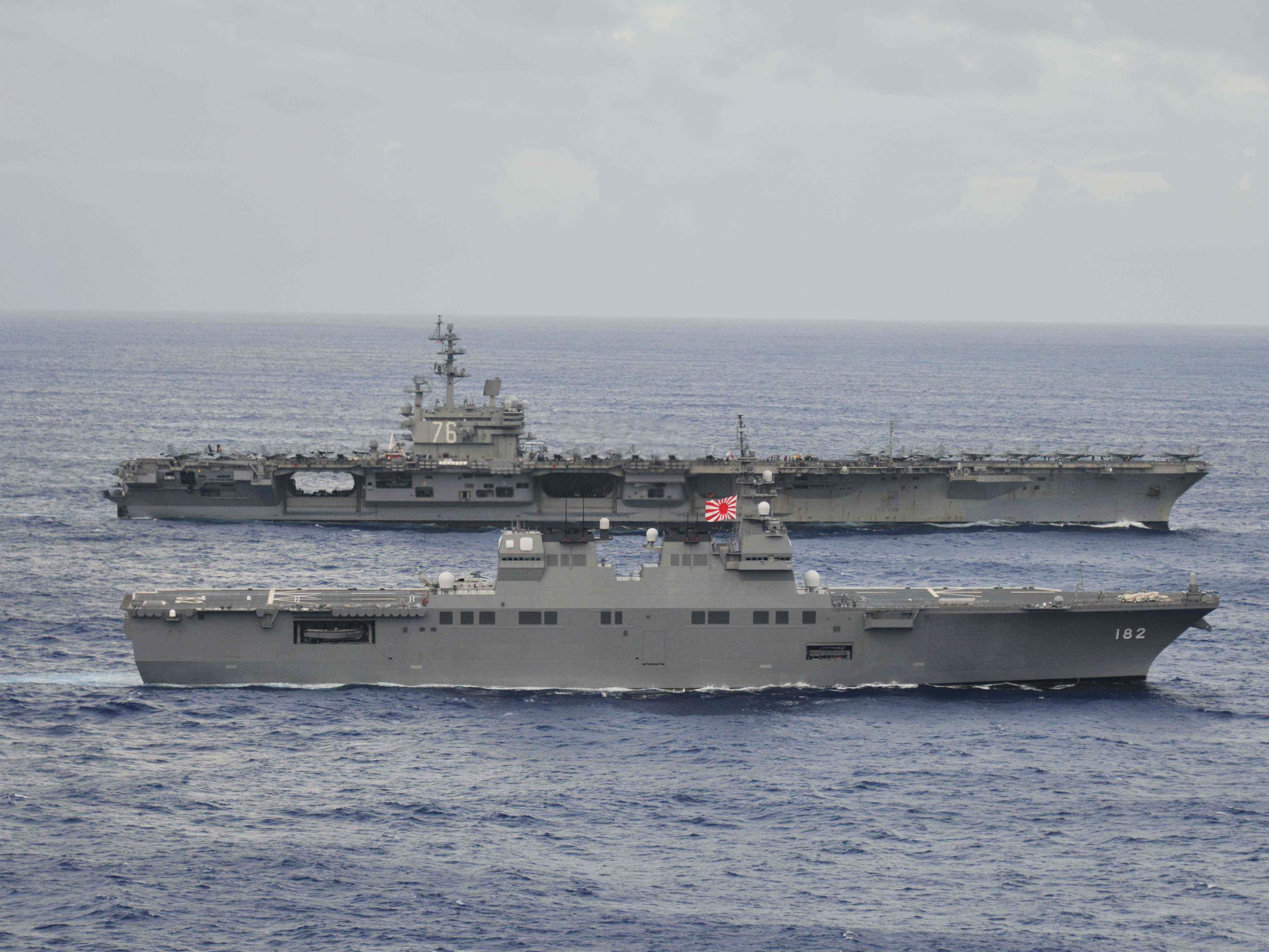US moves third carrier group to western Pacific ahead of Trump's Asia tour amid North Korea tensions
'We have to be ready for anything,' says Captain Carlos Sardiello

A second US aircraft carrier strike group has entered the western Pacific in as many days, bringing the total number to three ahead of Donald Trump’s Asia tour.
Amid heightened tensions with North Korea, The USS Nimitz and Theodore Roosevelt joined the Seventh Fleet operations area alongside the USS Ronald Reagan, which has been conducting exercises with South Korea’s navy.
North Korea dubbed them a “rehearsal for war”.
The US Navy said the nuclear-powered carriers and their attendant smaller craft were due to conduct “maritime security operations, theatre security cooperation, and port visits”.
The so-called supercarriers are one of the main ways the US projects its power around the world.
Mr Trump will begin a tour of the Asia-Pacific region with a briefing by US Pacific Command in Hawaii on 3 November, before moving on to Japan, South Korea, China, Vietnam and the Philippines.
He will use his stop in Beijing to urge President Xi Jinping to do more to curtail North Korea’s nuclear ambitions and missile tests.
The secretive communist state conducted a sixth nuclear test in recent months and launched a number of ballistic missiles, including two that passed over the Japanese mainland.
Mr Trump has threatened “fire and fury like the world has never seen” if the North continues to threaten its neighbours.
The Roosevelt‘s commanding officer, Captain Carlos Sardiello, said: “When a carrier leaves on deployment, we have to be ready for anything.”
A US Navy spokeswoman told The Independent: “Carrier strike groups routinely deploy to the western Pacific and the Indian Ocean. These deployments are part of a previously planned deployment cycle and it is not uncommon for incoming and outgoing carrier strike group transit timing to overlap.”
Retired US Navy admiral John Kirby said the deployments would also send a message to China, which for some years has been building up islands and military installations in the South China Sea – a bone of contention in the region.
"The navy is taking advantage of a scheduling overlap to demonstrate its capabilities to potential adversaries,” he told CNN. America was “making sure China knows it’s still the predominant force in the Pacific region”, he added.
China currently operates just one aircraft carrier, the Liaoning, which is based on a Soviet-era hull, but has said it will develop its own ships using domestic technology.
Join our commenting forum
Join thought-provoking conversations, follow other Independent readers and see their replies
Comments